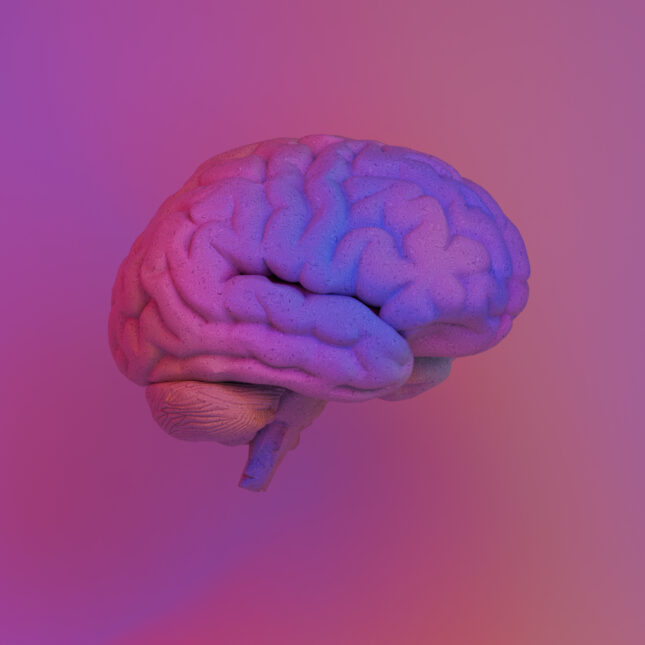
Our brains are shaped by our experiences — whether you’re a bird watcher, book lover, or a chess player. And a new study offers a clearer picture of how sex and gender influence the brain, too.
Researchers used artificial intelligence to analyze data from MRI scans of thousands of children and found that they could predict a study participant’s sex or gender — albeit imperfectly — by looking at how brain regions interacted with one another. Notably, the patterns of connections that predicted sex, which is driven in large part by biology, were not the same as the patterns that predicted gender, defined by a person’s sense of identity.
The authors found that brain networks associated with sex were more likely to involve regions of the brain involved in vision; sensory processing; regulating movement; and planning and decision-making. By comparison, gender-associated networks weren’t as strongly linked to particular brain regions.
The study, published on Friday in the journal Science Advances, leaves many questions unanswered, such as how these brain connections might differ in children whose sex and gender don’t align, when these network differences arise, and how they change over time. But the authors stress that the results underscore the importance of collecting data on both sex and gender at a time when that is not standard practice in neurological studies.
“Moving forward, we really need to consider both sex and gender separately if we better want to understand the brain,” said Elvisha Dhamala, the study’s lead author. “Moving beyond the scope of this study itself, the future of biomedical research really hinges on us considering sex and gender separately.”
The terms sex and gender are often used interchangeably in everyday life but have precise meanings to researchers. Sex is a biological variable, shaped by our body’s hormones, anatomy, and genetics, whereas gender is a cultural construct, shaped by both our sense of self and interactions with others.
Researchers have long known that brain disorders such as Alzheimer’s and attention-deficit hyperactivity disorder are diagnosed and occur at different rates depending on sex and gender, though pinning down how much each factor contributes to these disparities has been tricky. That’s because while sex data have been more routinely collected in biological research ever since a 2015 directive from the National Institutes of Health, gender often isn’t included as a separate category.
In the recent study, researchers analyzed data from the Adolescent Brain Cognitive Development Study, the nation’s largest long-term study of child brain development. They looked at functional MRI (fMRI) data from 4,757 participants between the ages of 9 and 10, whose sex was split about 50-50. Researchers also had gender data for all of the participants based on self-reported responses or those of a parent.
fMRI measures brain activity by tracking blood flow and electrical activity, allowing researchers to understand what regions are communicating with one another. The research team then used machine learning algorithms to predict a person’s sex or gender based on their brain connection patterns.
The authors at first found brain network patterns that could predict sex and gender. But it wasn’t clear from that analysis whether gender influenced the brain in a way that went beyond the influence of a person’s sex. To explore that question, the authors analyzed data from males and females separately to isolate the effects of sex. They found that the network patterns associated with gender differed from those linked to sex, regardless or whether they looked at gender as reported by the parent or child. The research team argued that this finding meant that sex and gender’s influences on the brain were not the same.
But Daniel Bayless, a neurobiologist at the Salk Institute who was not involved in the study, said the authors’ data do not fully support that claim.
Bayless applauded the study’s inclusion of gender, but he pointed out that when researchers built a predictive model for gender with results from both males and females, they found that the connections associated with gender and sex largely overlapped.
He also pointed out that the study didn’t separate and analyze data from children whose assigned sex at birth differs from their gender identity. That’s a point the authors acknowledged during a press briefing with reporters, explaining that they considered gender in this study on a continuum rather than in distinct categories.
Despite the study’s focus on sex and gender, these factors only accounted for around half of the variation in brain network patterns seen between participants, meaning there are other important contributing factors, too. And the paper only looked at participants at a single point in time. Researchers are now planning to track individuals to see how these patterns change during puberty and into adulthood.
To submit a correction request, please visit our Contact Us page.











STAT encourages you to share your voice. We welcome your commentary, criticism, and expertise on our subscriber-only platform, STAT+ Connect